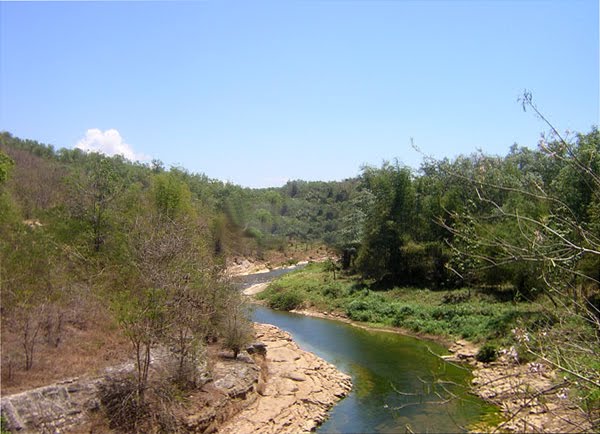Wanagama Forest’s Biodiversity: Plant Species in the Uncultivated Area

Wanagama forest where located in Yogyakarta Province, Indonesia was cleared in 1926. It was then rehabilitated by teak (Tectona grandis) in 1927 and 1948, but they had not been successful yet. In 1960 and 1964, Universitas Gadjah Mada (UGM) started to cultivate mulberry (Morus alba) in 10 hectares, as well as fast growing and fast harvesting species. Terrace was used and season also calculated. In 1967, rehabilitation continued by tree species within 79.9 hectares and became 599.9 hectares in 1983. Recently, uncultivated areas of Wanagama forest still exist and to be interesting for exploring because of limited data.
A study was conducted between June and November 2008 to investigate the plant composition in this uncultivated area. Nine plots of 5 m x 40 m were randomly made. All vegetation in the plots were counted, sampled, and documented. They were then identified in UGM.
 There are 83 species and 35 families were recorded. Cyperus rotundus is the most dominant species. Whereas Cyperaceae is the most dominant family, followed respectively by Fabaceae and Poaceae. Fabaceae has big potential for rehabilitation to fasten the succession in Wanagama forest.
There are 83 species and 35 families were recorded. Cyperus rotundus is the most dominant species. Whereas Cyperaceae is the most dominant family, followed respectively by Fabaceae and Poaceae. Fabaceae has big potential for rehabilitation to fasten the succession in Wanagama forest.
Source: Syahbudin, A., Adriyanti, D.T., Wiyono, Osozawa, K., and Ninomiya I. (2010) Wanagama Forest’s Biodiversity: Plant Species in the Uncultivated Area. In John A. Parotta and Mary A. Carr (Eds) International Forestry Review Vol. 12 (5): 158.
Presented in XXIII IUFRO World Congress, 23-28 August 2010/COEX Seoul, South Korea.
Please join Wanagama Bedrock Forest on Facebook 🙂


